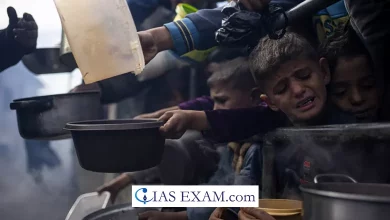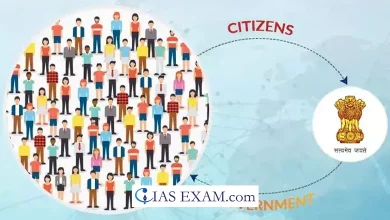
Context
Recently, the India Employment Report for 2024 togetherly has been released by the International Labour Organisation (ILO) and the Institute of Human Development (IHD).
Key Findings
- Youth Unemployment: India’s youth account for almost 83% of the unemployed body of workers.
- The share of youngsters with secondary or higher education in the total unemployed has almost doubled from 35.2% in 2000 to 65.7% in 2022.
- Labour Market Indicators: The key labor market indicators which includes the Labour Force Participation Rate (LFPR), Worker Population Ratio (WPR), and the Unemployment Rate (UR) showed a long-term deterioration between 2000 and 2018.
- However, these indicators witnessed an improvement after 2019.
- Employment Conditions: Despite the enhancements in labor market indicators, the employment conditions in India remain negative.
- The gradual transition to non-farm employment has reversed, and women in large part account for the growth in self-employment and unpaid family work.
- Almost 90% of workers remain engaged in casual work, at the same time as the share of daily work, which gradually elevated after 2000, declined after 2018.
- There are big livelihood insecurities, with most effective a small share being protected with social security measures.
- Skills Gap: The report stated that India’s huge young group of workers doesn’t seem to have the skills to deliver — with 75% of young people not able to send mails with attachments, 60% unable to copy and paste reports, and 90% unable to put a mathematical formula into a spreadsheet.
- Job Market: India’s job market saw a 2% Month on Month (MoM) decline in Nov 2023, with an overall 10% Year on Year (YoY) drop.
- Despite this, the Public Sector Undertakings (PSU) sector is predicted to bridge the employment gap.
- Widening Gender Gap: The lack of quality employment opportunities is contemplated in the higher level of joblessness among young people, mainly among those who have finished higher education.
- Many particularly educated young people are unwilling to take on low-paying, insecure jobs which might be presently to be had and would rather wait in the hopes of securing better employment in the future.
Policy Areas for Action Highlighted in Report
- Promoting Job Creation: The report emphasizes the need for policies that foster job creation to absorb the large number of youths joining the labor force annually.
- Improving Employment Quality: The quality of employment in India remains terrible, with a large percentage of workers engaged in casual work.
- The report requires measures to enhance employment conditions and offer workers with better job security and benefits.
- Addressing Labour Market Inequalities: The report highlights the need to deal with continual inequalities in the labor market, along with those based on gender, caste, and religion.
- Strengthening Skills and Active Labour Market Policies: The report notes that a big percentage of India’s youths lack the necessary abilities for employment.
- It requires stronger skills development initiatives and active labor market policies to enhance the employability of the youth.
- Bridging the Knowledge Deficits on Labour Market Patterns and Youth Employment: The report highlights the need for more research and information to understand labor market tendencies and the specific challenges confronted by young people in the labor market.
Related Government Initiatives To Boost Employment in India
- Atmanirbhar Bharat Rojgar Yojana (ABRY): Launched as part of the Atmanirbhar Bharat package 3.0, this scheme incentivizes employers for growing new employment along with social security benefits and recovery of loss of employment at some point of the Covid-19 pandemic.
- Pradhan Mantri Rojgar Protsahan Yojana (PMRPY): This scheme was released to incentivize employers for the introduction of current employment.
- National Career Service (NCS) Project: This project provides a variety of career-related services like job matching, career counseling, vocational guidance, information on skill development courses, apprenticeships, internships, etc.
- Mahatma Gandhi National Rural Employment Guarantee Act (MGNREGA): This act provides at least 100 days of assured salary employment in a financial year to every rural family whose adult members volunteer to do unskilled manual work.
- Pradhan Mantri Garib Kalyan Rojgar Abhiyaan (PMGKRA): This initiative was released to boost employment and livelihood opportunities for returnee migrant workers and similarly affected people in rural areas.
- Pradhan Mantri Mudra Yojana (PMMY): This scheme facilitates self-employment through imparting collateral-free loans up to Rs. 10 lakh to micro/small industry corporations and individuals.
- Garib Kalyan Rojgar Abhiyaan (GKRA): This initiative was launched to offer employment and livelihood opportunities to the distressed and to saturate the villages with public infrastructure and introduction of livelihood assets.
- PM GatiShakti: This is a transformative approach for economic growth and sustainable development, pushed by way of seven engines, specifically, Roads, Railways, Airports, Ports, Mass Transport, Waterways, and Logistics Infrastructure.
Conclusion
- The employment scenario in India is grim, with high unemployment quotes, loss of skills, and gender disparities. The government projects such as Make in India, Start-up India, Digital India, Smart City Mission, Atal Mission for Rejuvenation and Urban Transformation, Housing for All, Infrastructure Development and Industrial Corridors are also oriented towards producing employment opportunities.
- However, there is a need for more strong rules and initiative to enhance the employment state of affairs in the country.
Source: The Hindu
UPSC Prelims Practice Question
Q.International Labour Organization’s Conventions 138 and 182 are related to (2018)
a. Child Labour
b. Adaptation of agricultural practices to global climate change
c. Regulation of food prices and food security
d. Gender parity at the workplace
Ans: “a”





.png)



